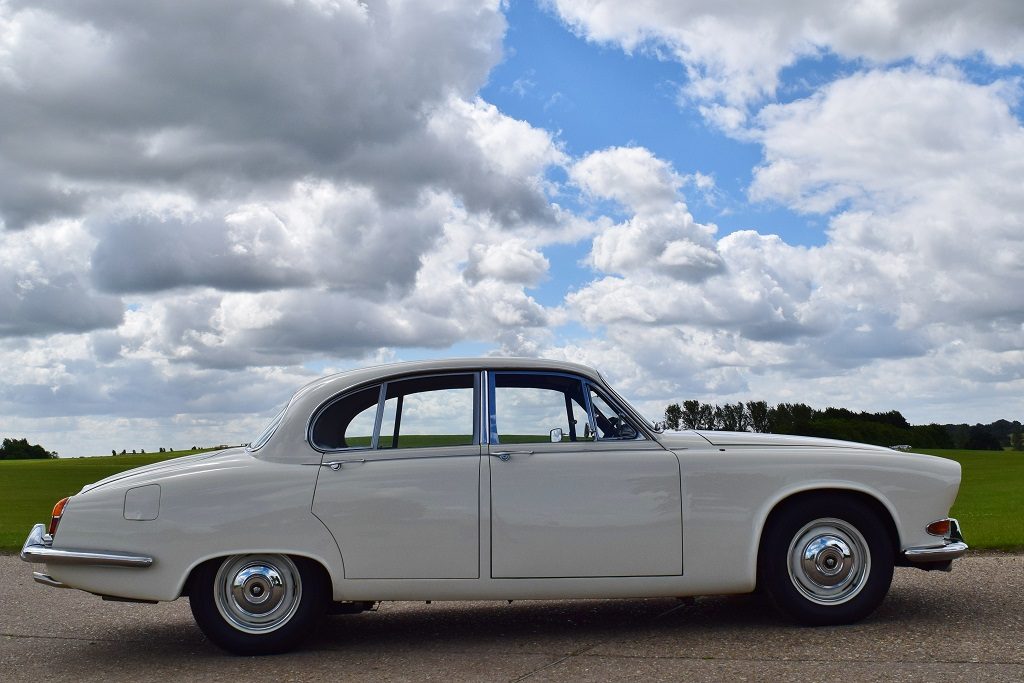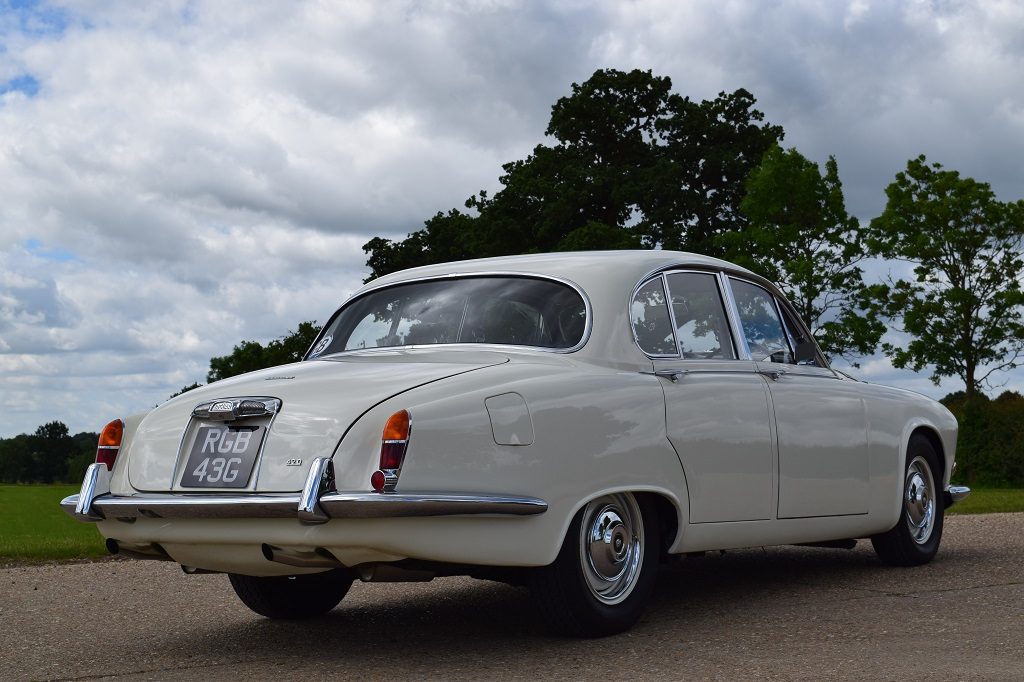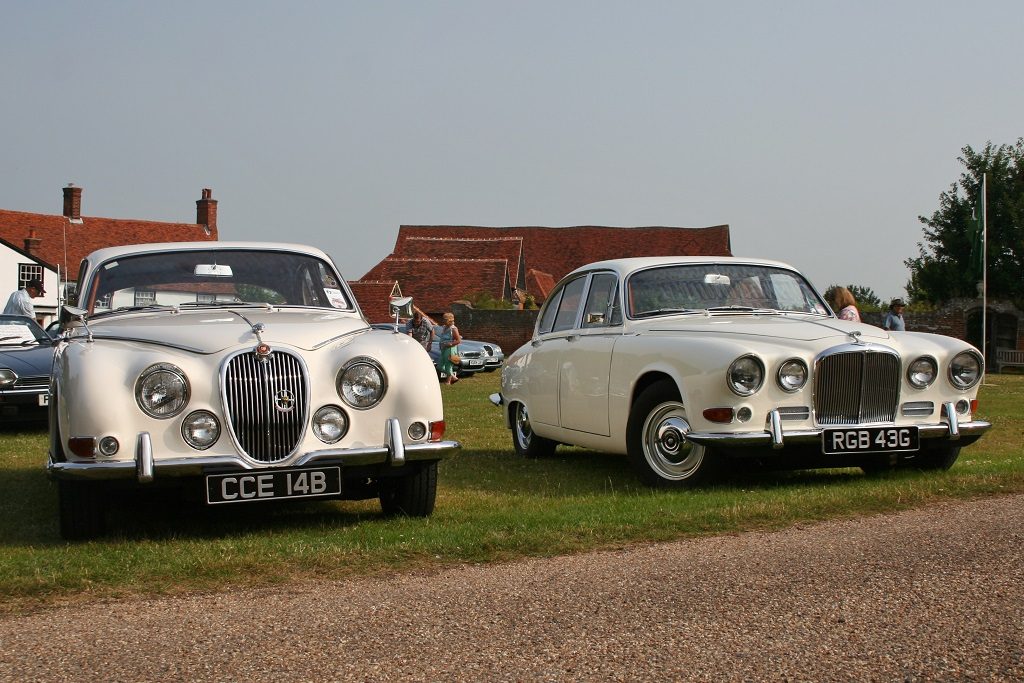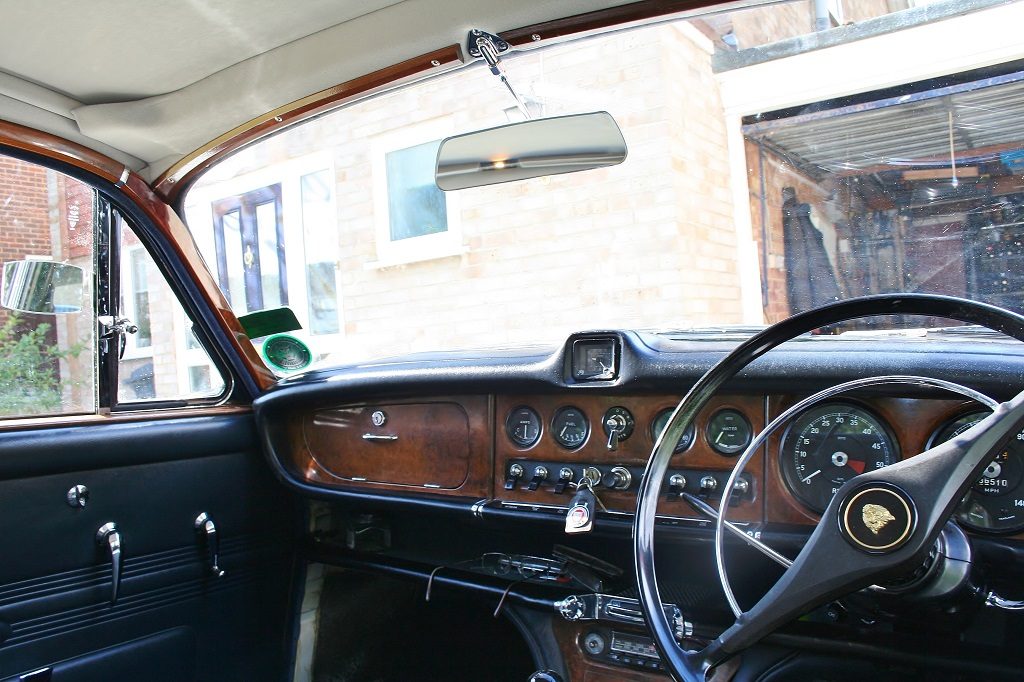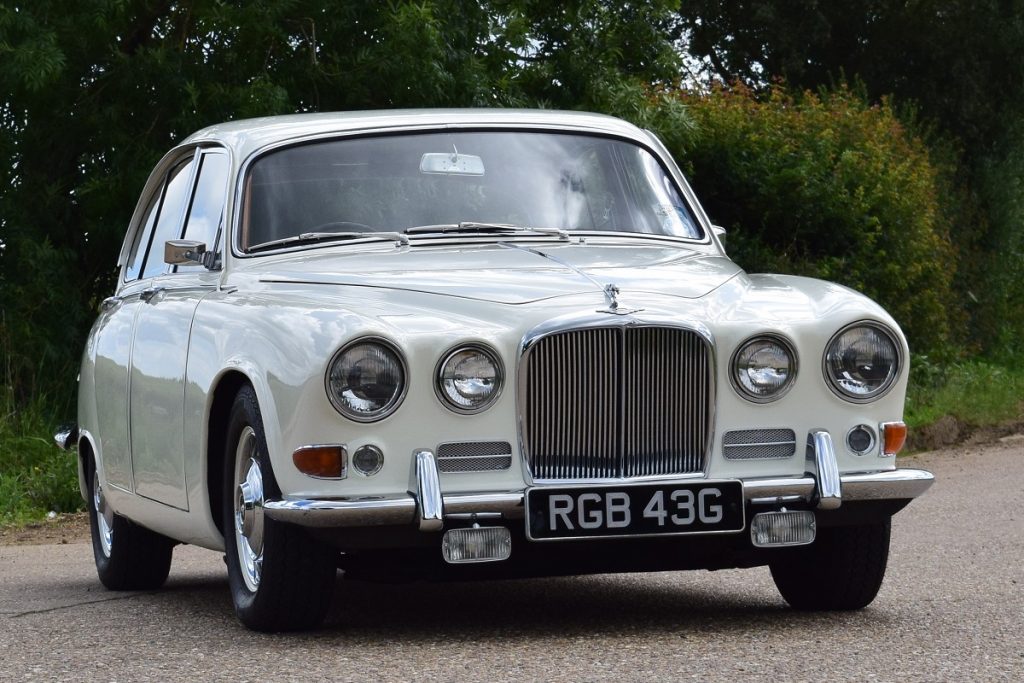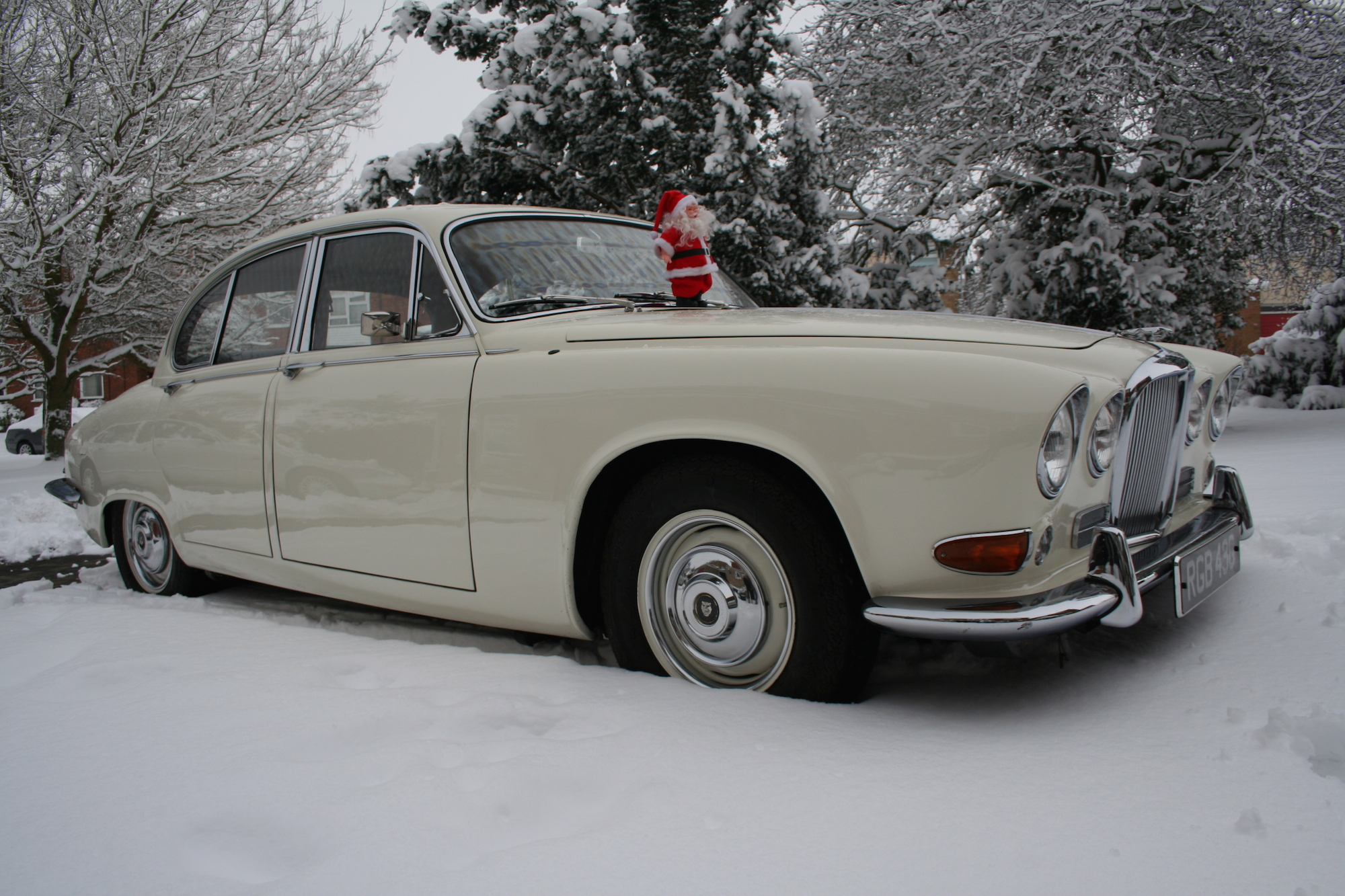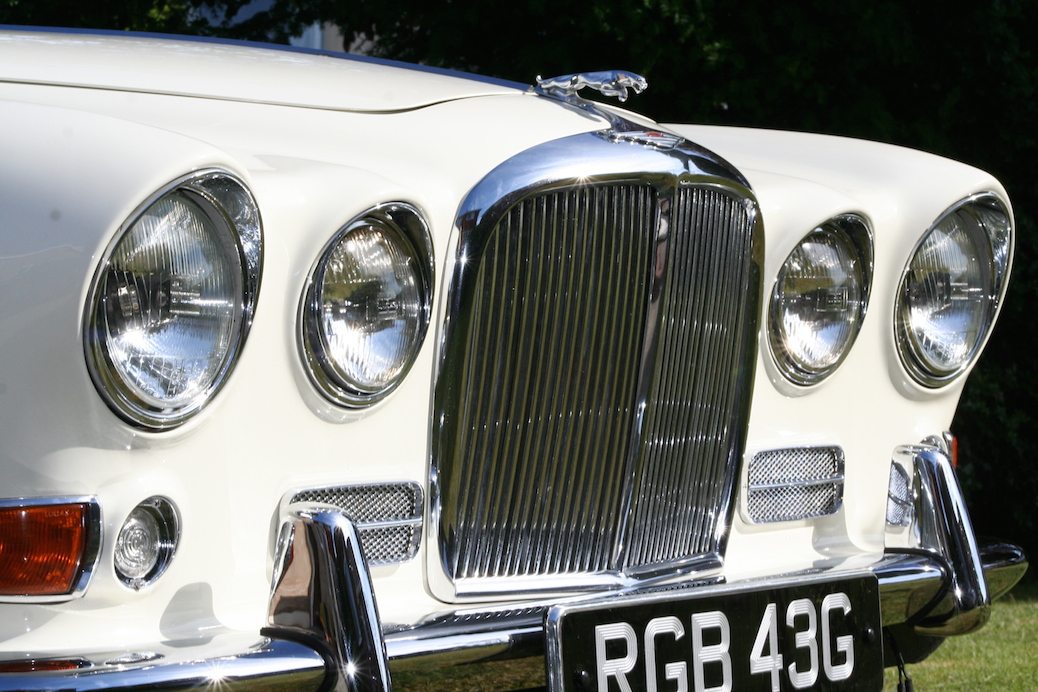The 20th anniversary celebrations of the XK8, well recorded last year in many magazines’ pages, somewhat overshadowed that of another, if less glamourous, of Jaguar’s products. It was, of course, the 50th year since the introduction of the Jaguar 420, marked by Paul Skilleter in the March 2016 issue of our JEC magazine and by Jim Patten’s article in Jaguar World – which featured your writer’s car. Let us also not forget Patrick Moynihan’s column in the national mag. Whilst these may seem to be a fully adequate response to such a milestone, my belief is that you can never have enough of a classic Jag, especially the surprisingly overlooked 420. So read on whilst I fly my solitary flag for the model that comprises half of my Jaguar collection…well, I only have this and the XJS, so not so hard to do!
The Background
At the start of the 1960s, Jaguar’s breadwinners were the compact Mark 2 sports saloons, derived from the earlier retrospectively named Mark 1’s from the 1950s. The Mark IX was still in production and it too shared a sporting pedigree from the many races and rallies it was entered into but it was now long in the tooth and in need of replacement. The new Mark X saw to that. It was a bloated-looking machine to some eyes and, whilst no slouch, could hardly be described as sporting. Jaguar were indeed moving away from their traditional sport models to target a more sophisticated executive market, as evidenced by the omission of a direct replacement for the Mark 2. Unfortunately sales of the Mark X were lower than expected, especially in the States, Jaguar’s most fertile market. Its bulk and subsequent lack of athletic prowess may well have weighed heavily against it in prospective purchasers’ minds. What was needed now was something smaller than that car, but more sophisticated than the Mark 2, to plug the now obvious gap and, crucially, to maintain sales. To some degree the Daimler 2.5 litre V8 Mark 2 derivative helped, but more was required.
The S-Type
So in 1963 a new mid-range Jaguar was launched, the S-type, which was available with 3.4 and 3.8 litre power plants. The 2.4 litre engine was not offered in the S-type to further reinforce that car’s higher position in the Jaguar model pecking order. With limited time and money available – when was that not the case? – a few compromises were necessary if the car was to reach production. The first being that it was based on the still current Mark 2, using most of its body shell. The all new rear-end styling, incorporating a much enlarged boot, was in the style of the Mark X and also took advantage of the same independent rear suspension. The interior benefitted from more walnut veneer and an increase in rear passenger space as a result of redesigned roof line and seating. The overall ambiance was improved whilst maintaining that traditional Jaguar feel.
The 420
This rapid facelift of the Mark 2 was rear-end biased and did not include much change to the front. It led, in my eye, to an imbalance in the overall styling with the curvaceous front being at odds with the more angular back. This was finally resolved in 1966 when sufficient finance was available to allow Jaguar to graft a new nose onto the S-type and, in the process, substituting a 4.2 litre version of the XK engine. That final facelift was named the 420. The styling was now balanced and the 420 became the car that the S-type should always have been.
The Upgrades
In addition to the nose job and larger engine, the new 420 came with other useful upgrades, not least better cooling made possible by the larger radiator grill and more space around the engine as a result of the restyle, which also provided more space for a larger re-designed radiator. An improved water pump and a viscous coupled fan finished the job. An alternator, pre-engaged starter motor and Varamatic power steering were key improvements which helped to differentiate the new car from the S-type. The suspension was carried over. The brakes were now a dual circuit system with three-pot callipers on the front and re-designed discs.
In the cabin there were few changes, the most noticeable being the padded surround to the dashboard and the substitution of padded door capping in lieu of the previous walnut veneered items. The timber “book ends” to the ventilation controls were also deleted and replaced with vinyl. A heated rear window and overdrive were also offered. One interesting feature introduced with the 420 is the clock which was incorporated into the top of the dashboard padded surround. This was as a result of the change to impulse-driven rev counters which left insufficient space inside their casings for the small clock that was previously combined within the instrument. Incidentally, the clock was transistorised and powered by an individual battery located within the dashboard and not, therefore, connected to the vehicle’s main wiring loom. Big mistake!! Have you ever come across one that works, let alone tell the time reliably? Thought not! It is also a shame that they did nothing to the heating system. Throwing it out would have been a good start.
The Daimler
To further spread the choice, a badge-engineered variant of the 420 was made available to satisfy all Daimler devotees; the Daimler Sovereign. This was offered with a few more refinements, and a higher price. Perforated and better quality leather, veneer and sun visors, together with a fluted radiator grill and rear number plate light assembly were the key changes. The production run of both the Jaguar 420 and Daimler Sovereign was short. From the introduction in October 1966 to its UK demise in August 1968 (OK, one car was built in September) 10,236 420s were built with approximately 847 being sent to South Africa as Knocked Down Kits. The Sovereign never sold much outside the UK and continued in production until 1969 with a final total of 5,824 built. Whilst these numbers are not great, during its years of production, the 420/Sovereign outsold the S-type and became Jaguar’s best-selling saloon of the time.
The Range
The introduction of the 420 brought the number of saloons concurrently being offered for sale in the Jaguar range to around nine. The S-type was still selling well enough to keep it on offer alongside the more expensive 420. It became clear that Jaguar could not cope with all these variants, plus the E Type sports car range. The cutbacks that occurred in 1967 saw the 3.8 Mark 2 dropped, the introduction of the less well specified 240 and 340 versions of the old Mark 2 and some rationalisation of the options catalogue. Waiting in the wings, however, was the game changer. Introduced in 1968, the all new XJ6 replaced all the Jaguar saloons at a stroke. It was the perfect design to bridge the gap between the compact Mark 2’s and the large Mark X and was the logical progression of what started with the S-type and later the 420. Both were stop gap models which, in the medium term, resolved the problem Jaguar experienced in moving away from their competition roots to a broader luxury express market. The XJ6 finally nailed it for Jaguar, but it was the S-type and the 420 that blazed the trail.
My Car
RGB 43G was a late registered car – August 1968 – and was one of the last 400 or so to leave the production line. This is apparent from the ribbed cam covers which were introduced during that month. The car also came with radial tyres, overdrive, a radio, front fog lamps (Cibies), telescopic steering column, front inertia reel seat belts, heated rear window (a few strands still work) and laminated windscreen. I would like to say “and much more” but there really wasn’t, so I just enjoy it as it comes. It may not be as fashionably popular in the classic Jag hallowed halls of fame as the Mark 2, but it is a better all-rounder….and it makes me smile.
Neil Shanley


